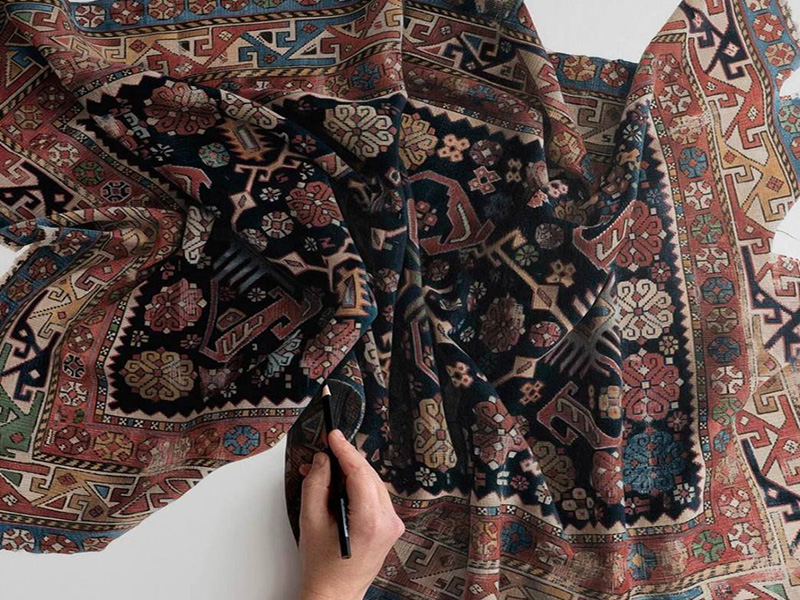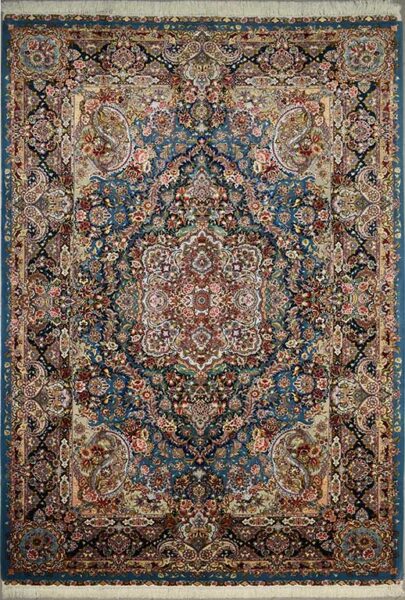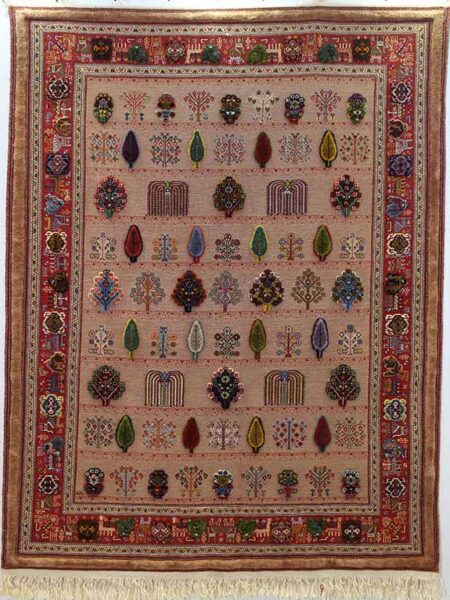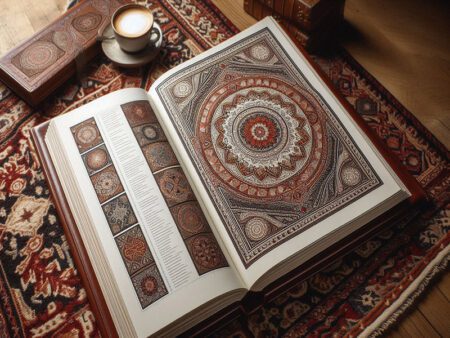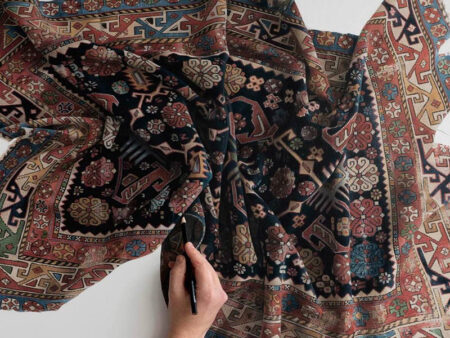History of Iranian handwoven carpet methods
What is the difference between single-weft rug and double-weft rugs? The investigation of the oldest hand-woven Iranian rug of Pazyryk brings interesting results. This evidence shows that Iranian weavers used the “double-weft” method in rug weaving since about 2500 years ago.
Another name for the “double-weft” method in Iran is “Loole-baft“.The exact time of the emergence of the double-weft method is not known. But the patterns of handwoven rugs have evolved and changed from broken patterns to semi-broken and round ones. We can conclude that the “single-weft” method was common before the double-weft method.
The weaving of geometric patterns is the result of the or single-weft method or “Takht-baft“. In the Timurid period, following the transformation of patterns and the tendency of weavers to turn motifs, they also invented the double weft method. In this way, rugs with Eslimi and rotating designs entered the field of rug weaving in Iran.
Read more about Pazyryk rug in this article: What Do You Know about the World’s First Carpet, Pazyryk?
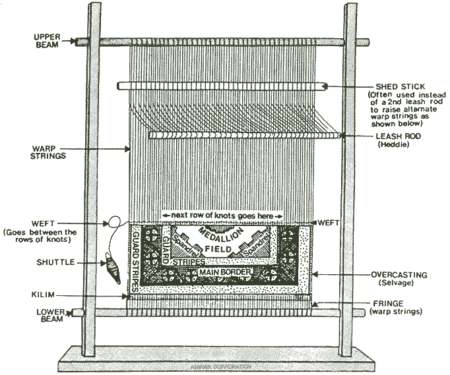
All the components of a rug on the loom
Methods of weaving handmade carpets
The basis and foundation of handwoven rugs are warps. In such a way that if the warp of rug is damaged, the whole handwoven carpet will fall apart. But wefts and piles are less sensitive than warps.
It is true that the base of the rug is warps, but it is the weft method that distinguishes the type of carpet texture. Handwoven rugs are woven in different regions of Iran with special weft methods. Carpets are divided into 3 general categories based on the method of passing the wefts:
- Single-wefted or “Takht-baft”
- Double-wefted or “Lole-baft”
- “Nim-lole”
As we said ,based on this, the rugs are divided into single-weft, double-weft types and “Nim-lole“. The rugs that are woven in the cities are usually double-weft rugs, and rural and nomadic rugs are usually single-weft carpets.
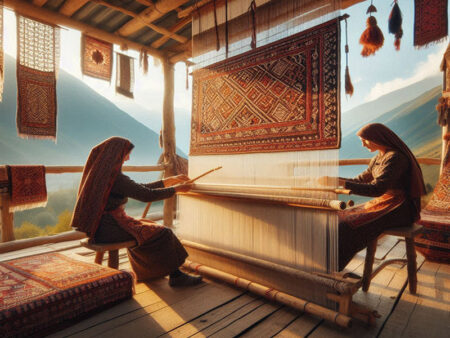
Weaving a double-sided rug
“Takht-baft” or Single-weft rug or rug:
What does single-weft rug mean? This weaving method is more common in nomadic and rural areas of Iran. Thick or heavy type of weft yarn is often used for single-weft rug weaving.
First, the weaver passes the thick weft thread over the cross created by the warps. The weft thread should reach the end of the rug. The weaver beats on each row with an appropriate force. After each row is beaten once, the weaver starts weaving the next row. This time, the weft thread is passed over the row in the opposite direction and beaten.
The weft used to weave single-weft rugs is thicker than urban woven rugs. In this method, the distance between the threads at the knot is at least equal to the diameter of the thread used.
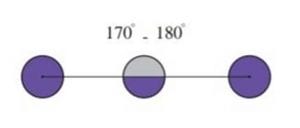
The position of the warps in the single-weft
In this method, the angle between the warps is 170-180 degrees and the warps are almost parallel and side by side. If we look at the back of single-wefted rugs, the weft in these carpets is clearly visible from the back, and both arcs indicate a knot. These rugs are soft and flexible. The use of this method is common in Turkmen rugs, Bakhtiari rugs, Baluch rugs, and some villages rugs.
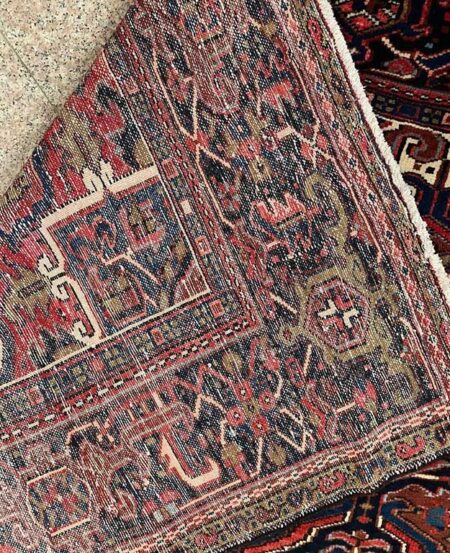
Bilverdi rug with Takht-baft method
“Lole-baft” or Double-weft rugs :
This type of weaving is more common among urban rugs. In this method, thin weft and thick weft are used. First, the weaver passes the thick weft under the cross made of threads and lays it on the knots. At this stage, the weaver beats the row once with the comb. Then they pass the thin weft over the cross and beat it again with a comb. In this method, the warps are completely stuck together at the place of knotting and are placed up and down.
The angle between the warps in this method fluctuates between 80 and 120 degrees. If we look at the back of these rugs, it is completely smooth and uniform, the wefts are hardly visible and each arch represents a knot. The use of this method is common in Tabriz rugs, Qom rugs, Isfahan rugs, Mashhad rugs, Nain rugs, etc.
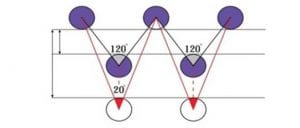
The position of the warps in the double-weft
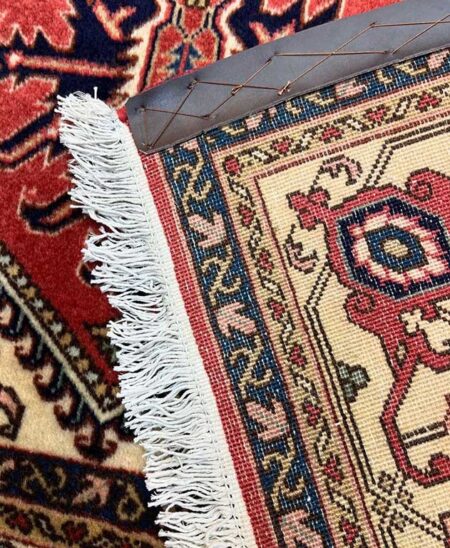
Ardabil rug with Lole-baft method
“Nim-lole” rugs:
This method of weaving is also more common in rural rugs. The “Nim-lole” method is not as common as in the past. The amount of carpet production in this way has decreased. In this method, two wefts with the same thickness are used to pass the wefts.
First, the weaver passes a weft under the cross formed by the warps. Then he passes the second weft from the cross over the knots of the rug and beats it with a comb. In such a way that the distance between the warps of the knot in the section of the knot is equal to half of the warp.
The angle between the warps in this method fluctuates between 120 and 170 degrees. The knots behind these rugs are arched and semi-arched. In the past, Qashqai rugs and Heriz rugs were woven in this way.
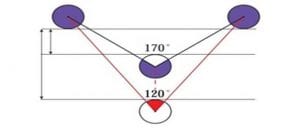
The position of the warps in the Nim-lole
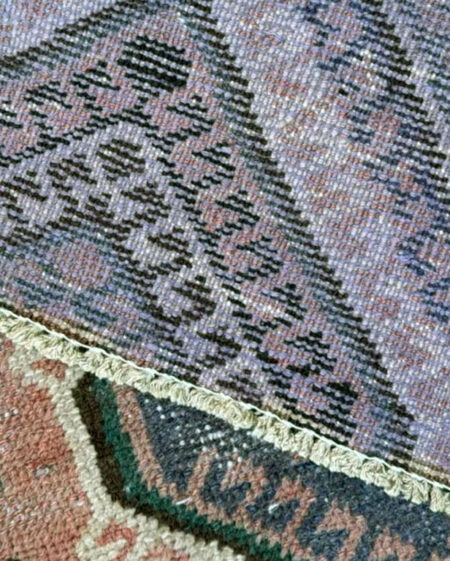
Bakhtiari rug with Nim-lole mothod
Methods of weaving rugs in each region and their warp and weft are not the same as in other regions. Therefore, carpets are divided into the following three categories in terms of local style. Currently, in most regions of Iran, hand-woven rugs are woven using the double weft method. The monopod method is common only in some rural areas. Rugs that are often woven in a single-weave method have geometric patterns, and double-weave rugs have rotating and more complex patterns.
In this article, we tried to introduce you to the types of Iranian rugs. Although this part is quite specialized, we tried to explain it to you in a simple language. If you intend to buy Iranian rugs online and have questions about their weaving, you can contact us. Our consultants in the Vernacarpets collection will guide you on this matter.

